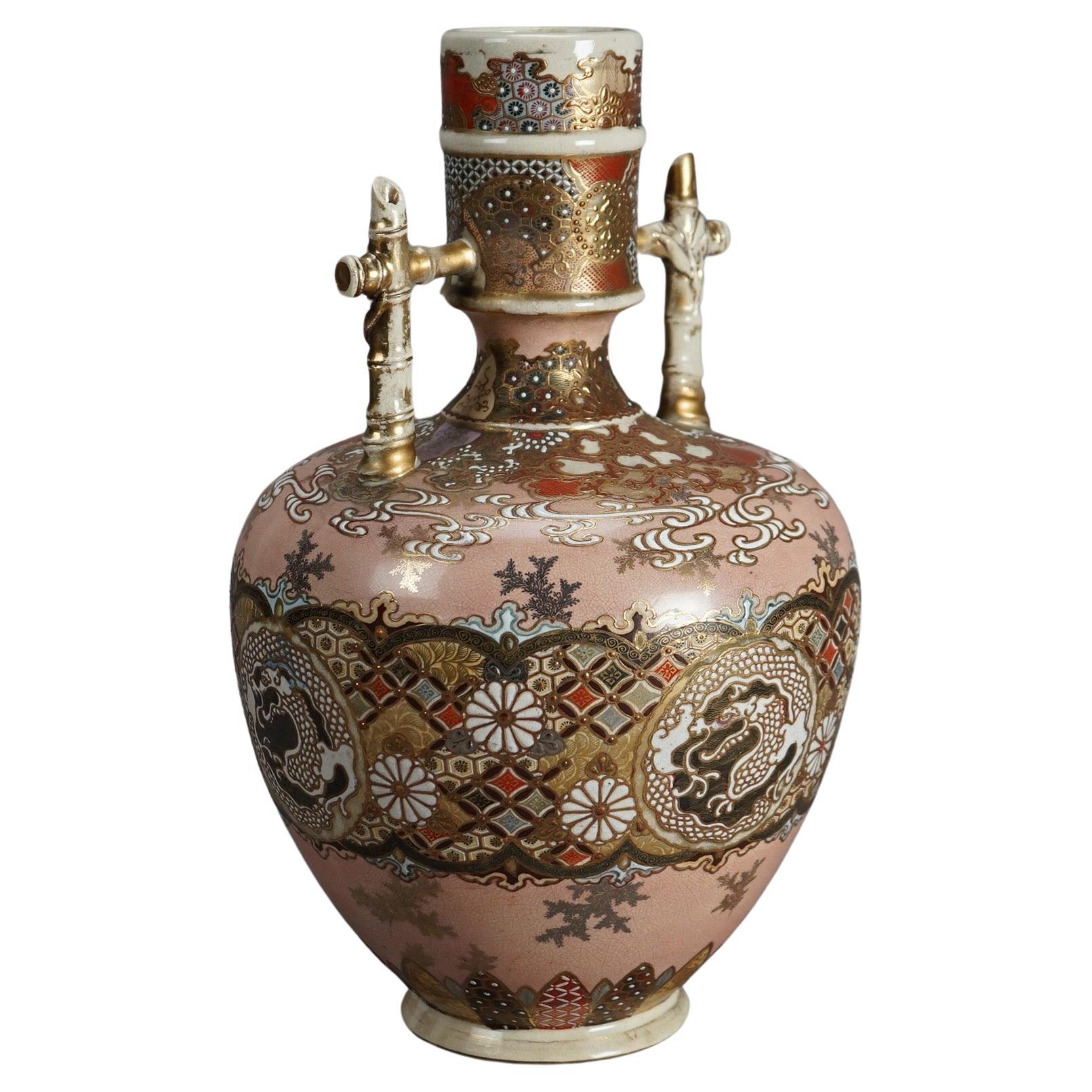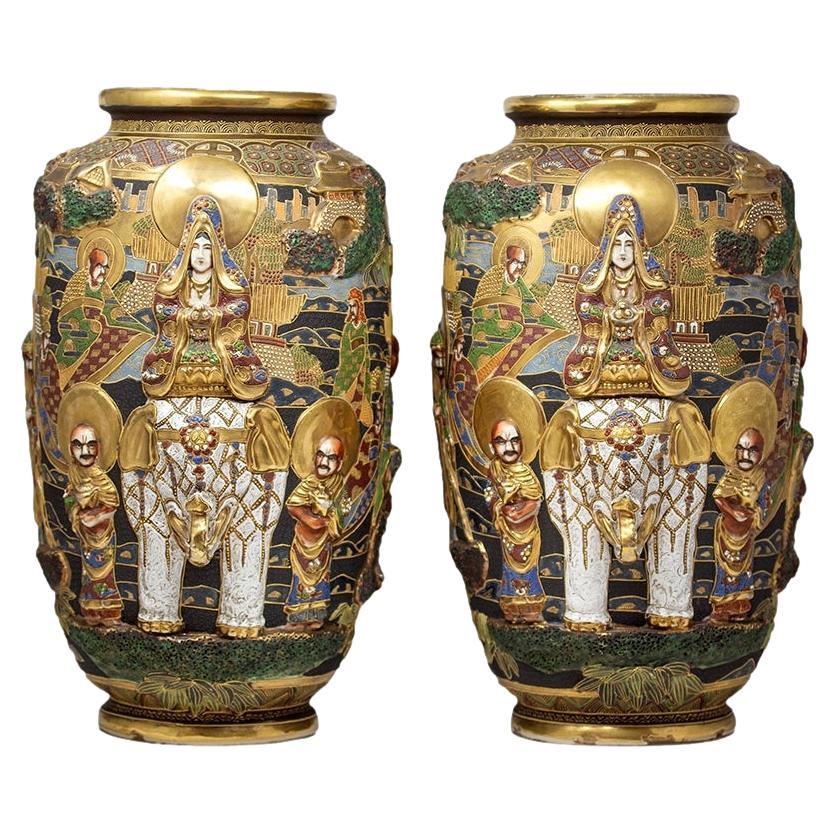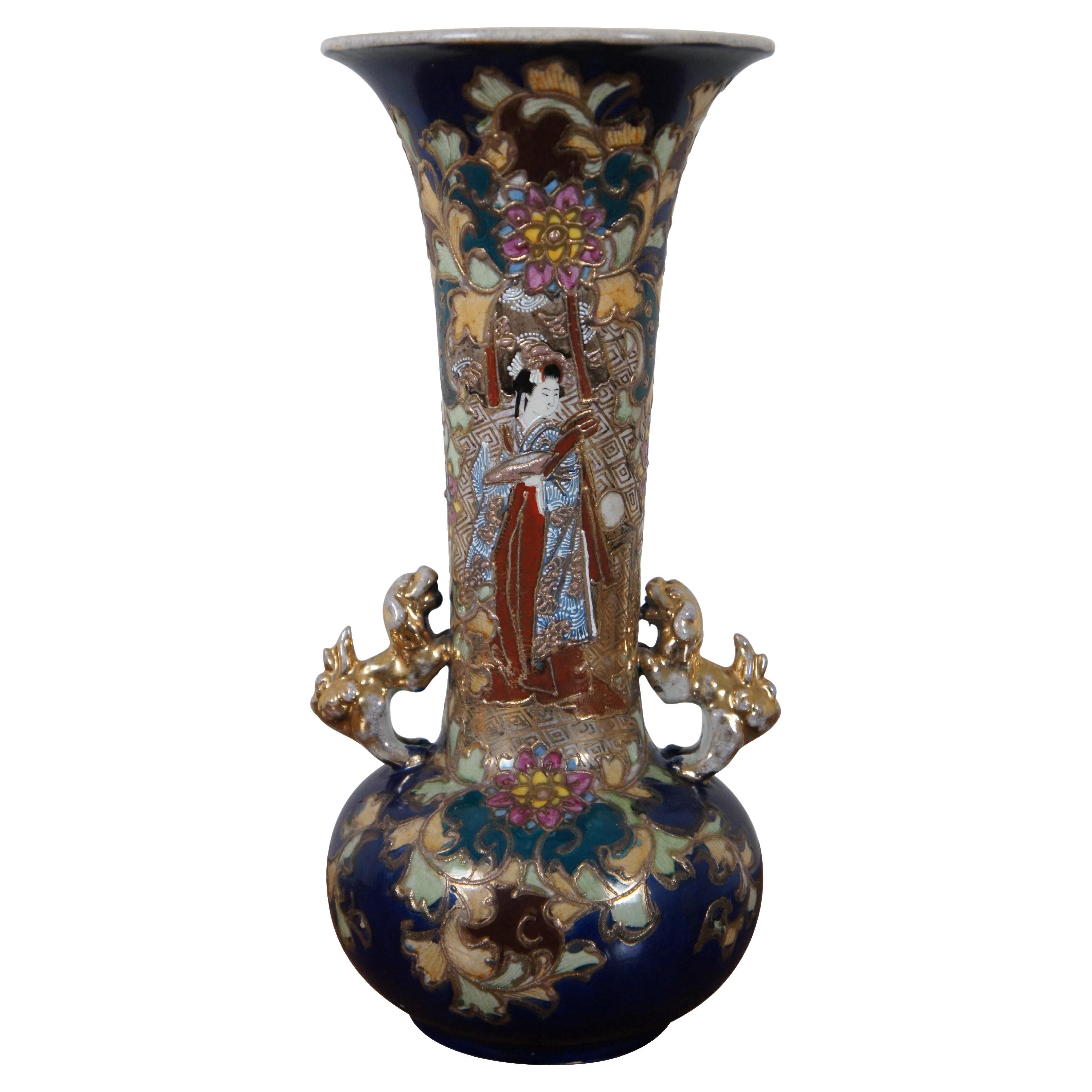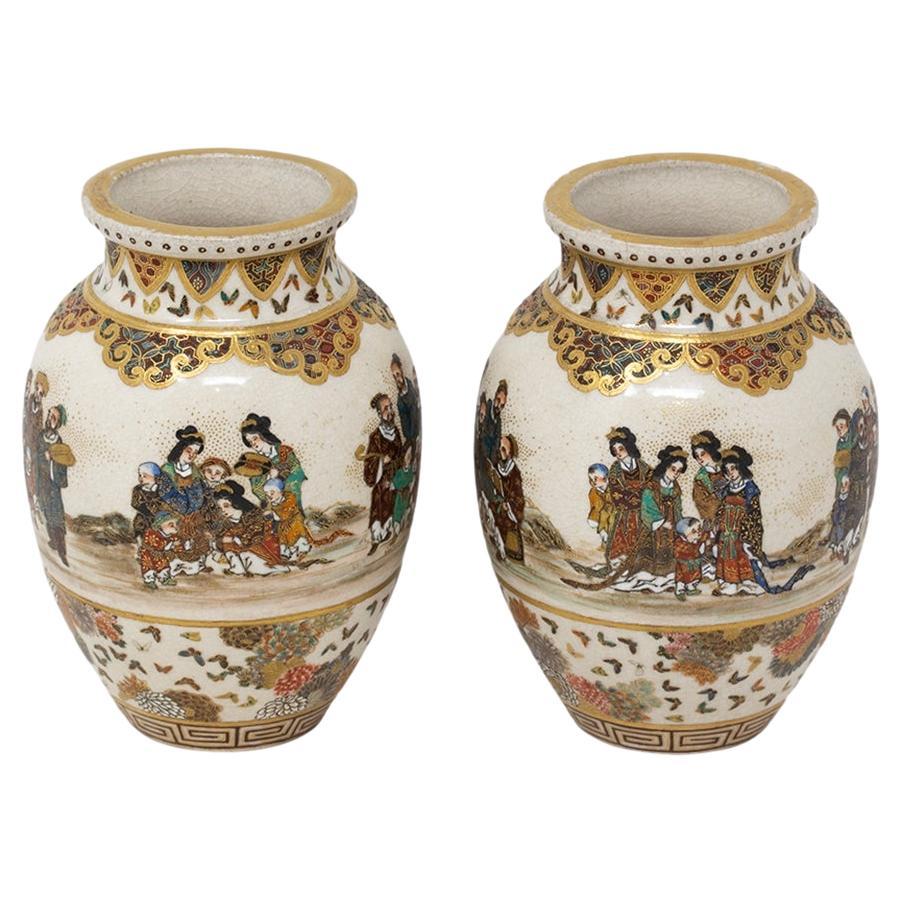Items Similar to Antique Japanese Meiji Satsuma Porcelain Vase, Garden Scene & Pheasant, C1910
Want more images or videos?
Request additional images or videos from the seller
1 of 12
Antique Japanese Meiji Satsuma Porcelain Vase, Garden Scene & Pheasant, C1910
About the Item
Antique Japanese Meiji Satsuma Porcelain Vase, Garden Scene & Pheasant, C1910
Measures- 6.25''H x 3''W x 3''D
- Dimensions:Height: 6.25 in (15.88 cm)Width: 3 in (7.62 cm)Depth: 3 in (7.62 cm)
- Style:Meiji (In the Style Of)
- Materials and Techniques:
- Place of Origin:
- Period:
- Date of Manufacture:Circa 1910
- Condition:Wear consistent with age and use. Overall very good condition with crazing; as photographed.
- Seller Location:Big Flats, NY
- Reference Number:
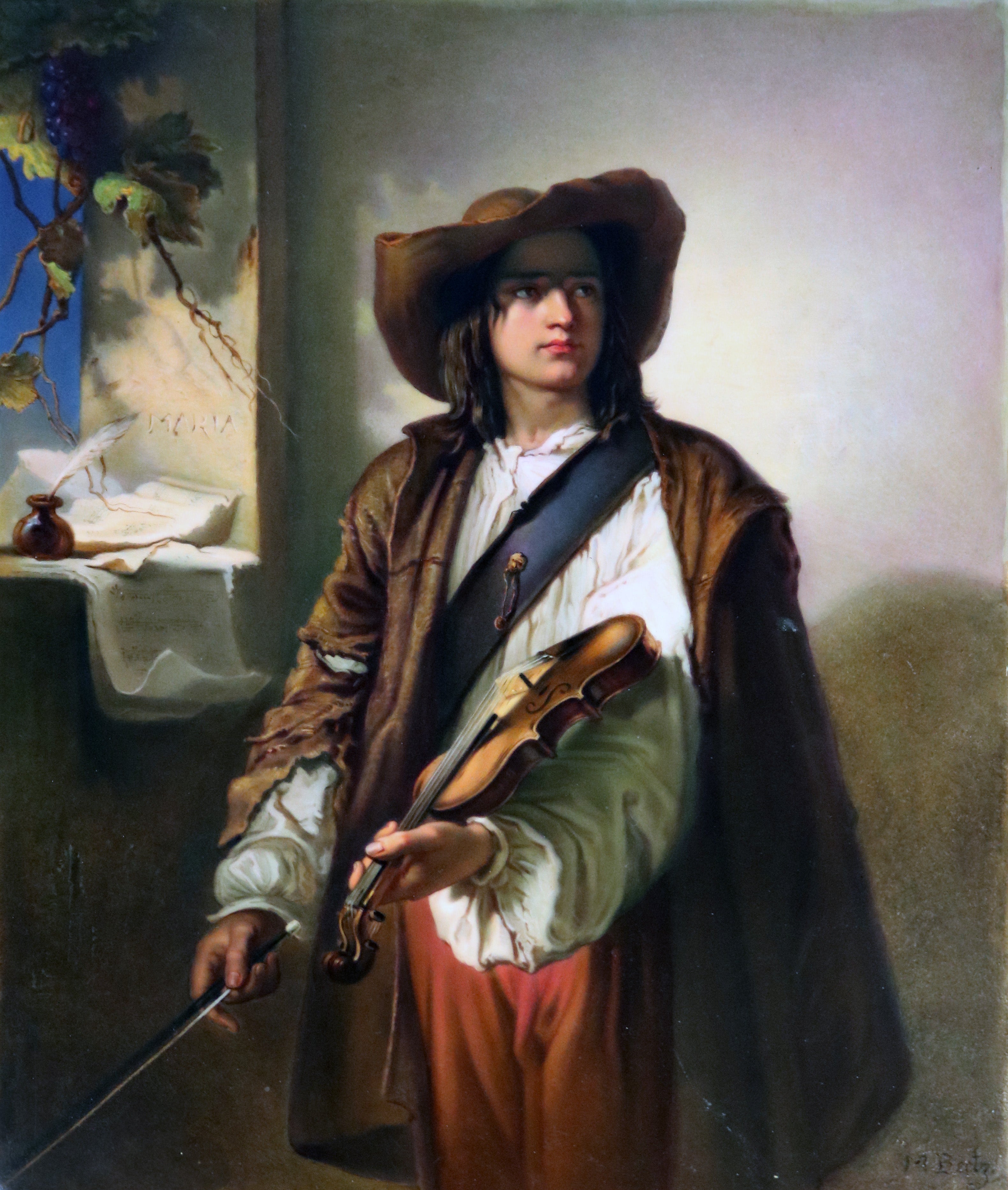
About the Seller
4.9
Platinum Seller
These expertly vetted sellers are 1stDibs' most experienced sellers and are rated highest by our customers.
1stDibs seller since 2016
2,392 sales on 1stDibs
Typical response time: 5 hours
- ShippingRetrieving quote...Ships From: Big Flats, NY
- Return PolicyA return for this item may be initiated within 7 days of delivery.
More From This SellerView All
- Antique Japanese Satsuma Meiji Pottery Bottle Vase C1910Located in Big Flats, NYAn antique Japanese Satsuma Meiji bottle vase offers porcelain construction with flanking bamboo form handles, hand gilt and painted floral, fol...Category
Early 20th Century Asian Meiji Vases
MaterialsPottery
- Antique Japanese Porcelain Enameled Vase, Garden &Scene Pheasant C1910Located in Big Flats, NYAntique Japanese Porcelain Enameled Vase, Garden &Scene Pheasant, Made in Japan, C1910 Measures- 10.75''H x 6.25''W x 6.25''DCategory
Early 20th Century Japanese Ceramics
MaterialsPorcelain
- Antique Japanese Meiji Satsuma Hand Painted & Gilt Porcelain Vase C1910Located in Big Flats, NYAntique Japanese Meiji Satsuma Hand Painted & Gilt Porcelain Vase with Flowers, Butterfly & Bamboo, C1910 Measures- 8.75''H x 4.5''W x 4.5''DCategory
Early 20th Century Asian Meiji Ceramics
MaterialsPorcelain
- Antique Japanese Satsuma Meiji Floral & Gilt Decorated Porcelain Vase C1910Located in Big Flats, NYAntique Japanese Satsuma Meiji Hand Painted Floral & Gilt Decorated Porcelain Vase C1910 Measures - 10.25"H x 3.5"W x 3.5"DCategory
Early 20th Century Japanese Porcelain
MaterialsPorcelain
- Antique Japanese Meiji Satsuma Gilt Porcelain Vase with Pagoda & Mt Fugi C1910Located in Big Flats, NYAntique Japanese Meiji Satsuma Gilt Porcelain Vase with Pagoda & Mt Fugi, Signed, C1910 Measures- 7.25''H x 3.5''W x 3.5''DCategory
Early 20th Century Asian Meiji Ceramics
MaterialsPorcelain
- Antique Japanese Porcelain Enameled Garden Scene Vase with Birds & Flowers C1910Located in Big Flats, NYAntique Japanese Porcelain Enameled Garden Scene Vase with Birds & Flowers C1910 Measures- 10''H x 5''W x 5''DCategory
Early 20th Century Japanese Ceramics
MaterialsPorcelain
You May Also Like
- Antique Japanese Meiji Satsuma Painted VaseBy SatsumaLocated in LA CIOTAT, FRA petite and beautiful hand-decorated ceramic baluster vase, painted all around with traditional Japanese motifs, including native flora, birds and bamboo stems on a creamy glazed background. The colour palette is bold and bright, with highlights of green, red and blue, together with plentiful gilt relief...Category
Antique 19th Century Japanese Meiji Ceramics
MaterialsCeramic
- Japanese Satsuma Vase Yabu Meizan MeijiBy Yabu MeizanLocated in Atlanta, GAA Satsuma baluster form vase from the studio of Yabu Meizan (birth name Yabu Masashichi; 1853-1934), who is one of the most celebrated and collectible Satsuma artists from Meiji Peri...Category
Early 20th Century Japanese Meiji Ceramics
MaterialsCeramic
- Japanese Meiji Period Satsuma Floor VasesLocated in Newark, EnglandThe vases of large oval form potted from earthenware with pinched neck and base stood upon a splayed circular foot. The vases extensively decorated with a continuous scene with polychrome colours and raised enamels featuring a large central white elephant and various figures. The top and bottom bordered by arched gilt decoration and gilded rims. The bases signed by a three character mark in red 新井造 Arai Zo (made by Arai). The vases date to the Meiji period (1868-1912) and are large in size measuring 46cm High. Meiji Period is an era of Japanese history that spanned from 1868 to 1912. It was the first half of the Empire of Japan, when the Japanese people began to build a paradigm of a modern, industrialised nation state and emergent great power, influenced by Western countries and aesthetics. As a result of radically different ideas, the changes to Japan were profound and it affected the social structure, politics, economy, military, and foreign relations...Category
Antique Late 19th Century Japanese Meiji Vases
MaterialsCeramic, Earthenware
- Antique Japanese Meiji Era Porcelain Satsuma Figural Kutani Vase Fu Dogs GeishaLocated in Dayton, OH"Late Meiji era Kutani vase, circa 1903. A beautiful porcelain blue ground centered by an intricate Geisha flanked by gold figural Foo Dog handles. Features a floral and foliat motif throughout. Signed along the base. Kutani ware, Japanese porcelain made in Kaga province (now in Ishikawa prefecture). The name “Old Kutani” refers to porcelain decorated with heavily applied overglaze enamels and produced in the Kaga mountain village of Kutani. The powerful Maeda family had established a kiln there by 1656. The clay bodies used were gray and coarse-grained. On most pieces—dishes and bowls were especially common—a white or blue-white matte glaze was decorated in dark, restrained colours, initially greens, yellows, and some reds, and later purples and dark blues. Some items had cobalt blue decoration under a white glaze. The most noted Old Kutani pieces are “Green Kutani,” in which most of the surface is covered in a green or blue-green glaze to which one or two colours have been added (or the glaze is applied evenly over a design executed in black). The bold designs of Kutani ware drew freely from Chinese ceramics, paintings, and textiles. They are renowned for their rich pictorial ornament executed in lively, intense lines. Owing to local financial problems and difficulties in obtaining the necessary pigments, the Kutani kiln was abandoned some time in the Genroku period (1688–1704). Ceramics production in Kaga enjoyed a renaissance early in the 19th century, however, including the establishment of another kiln at Kutani in the 1820s. In addition to a revival of the styles of Old Kutani ware, there arose a style using gold on a coral-red ground, which was perfected during another spate of activity that began in the 1860s. Technical advances were made and Western-style pigments were adopted, and by the 1890s modern Kutani...Category
Antique Early 1900s Meiji Vases
MaterialsPorcelain
- Japanese Meiji Period Satsuma Vase Pair GyokuzanLocated in Newark, EnglandPainted with Continuous Scenes From our Japanese collection, we are delighted to offer this Japanese Satsuma Vase Pair by Gyokuzan. The vases of squat bulbous form with pinched neck...Category
Antique Late 19th Century Japanese Meiji Vases
MaterialsCeramic, Pottery, Earthenware
- Japanese Miniature Satsuma Vase Yabu Meizan MeijiBy Yabu MeizanLocated in Atlanta, GAA small Satsuma vase from the studio of Yabu Meizan (birth name Yabu Masashichi; 1853-1934), who is one of the most celebrated and collectible Satsu...Category
Antique Early 1900s Japanese Meiji Ceramics
MaterialsCeramic
Recently Viewed
View AllMore Ways To Browse
Adam Ceramics Usa
Dark Blue With Peacock Vase
Vintage Blenko Blue Glass
Blue Mary Gregory Glass
Italian Mosaic Pottery
Large 18 Tall Clear Vessel
Richard Ginori Urn
Salviati Horse
Bronze Vase Yuan
Hattie Molloy
Ramina Ceramic Vase
Thomas Anagrius
Vases Glasses
Art Deco Vase Art Deco
Molded French Furniture
Violet Furniture
Green Murano Mid Century Green Vase
Pink Opaque

